
Nashville is the capital city of the U.S. state of Tennessee and the seat of Davidson County. With a population of 689,447 at the 2020 U.S. census, Nashville is the most populous city in the state, 21st most-populous city in the U.S., and the fourth most populous city in the southeastern U.S. Located on the Cumberland River, the city is the center of the Nashville metropolitan area, which is one of the fastest growing in the nation.

Belle Meade is a city in Davidson County, Tennessee. Its total land area is 3.1 square miles (8.0 km2), and its population was 2,912 at the time of the 2010 census.
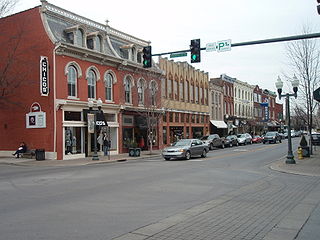
Franklin is a city in and county seat of Williamson County, Tennessee, United States. About 21 miles (34 km) south of Nashville, it is one of the principal cities of the Nashville metropolitan area and Middle Tennessee. As of 2020, its population was 83,454. It is the seventh-largest city in Tennessee. Franklin is known to be the home of many celebrities, mostly country music stars.

DeFord Bailey was an American country music and blues star from the 1920s until 1941. He was one of the first performers to be introduced on Nashville radio station WSM's Grand Ole Opry, the first African-American performer to appear on the show, and the first performer to have his music recorded in Nashville. Bailey played several instruments in his career but is best known for playing the harmonica, often being referred to as a "harmonica wizard".
The Ensworth School is a private school located on two separate campuses in Nashville, Tennessee.

Edwin Warner Park and Percy Warner Park, collectively known as Warner Parks, are two major public parks in Nashville, Tennessee. They are part of the park system managed by the Metropolitan Board of Parks and Recreation of Nashville and Davidson County. Percy Warner Park's front entrance is located at the end of Belle Meade Boulevard. The parks are listed on the National Register of Historic Places as Warner Park Historic District. The district is primarily within Nashville along the southern edge of Davidson County, Tennessee, but it extends into Williamson County, Tennessee as well.
This is a list of the National Register of Historic Places listings in Davidson County, Tennessee.
McKissack & McKissack is an American architecture, engineering, program management and construction firm based in Washington, D.C. It is the oldest minority-owned architecture and construction company in the United States.
Edward Emmett Dougherty, a.k.a. Edwin Dougherty was an architect in the southeastern United States. One of his best known designs was the Tennessee War Memorial Auditorium in Nashville in 1922. The work won state and national design competitions.

The Acme Farm Supply Building is a listed building in Nashville, Davidson County, Tennessee, US. Originally a grocery store, it has been a restaurant and music venue since 2014.
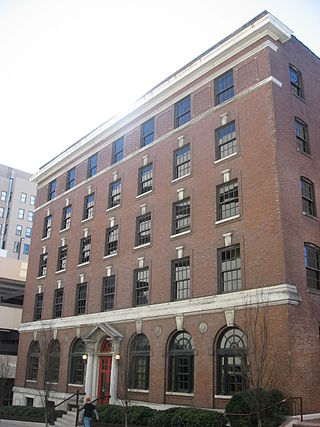
The Young Women's Christian Association Building, also known as the Jacques-Miller Office Building, is a historic building in Nashville, Tennessee, USA.
Donald W. Southgate (1887–1953) was an American architect. He designed many buildings in Davidson County, Tennessee, especially Nashville and Belle Meade, some of which are listed on the National Register of Historic Places.
Edwin Augustus Keeble was an American architect who was trained in the Beaux-Arts architecture tradition. He designed many buildings in Tennessee, including homes, churches, military installations, skyscrapers, hospitals and school buildings, some of which are listed on the National Register of Historic Places. He is best known for Nashville's landmark Life and Casualty Tower built in 1957 which was the tallest commercial structure in the Southeastern United States at that time. It reflected an architectural turn to modernism and was one of the first buildings emphasizing energy efficiency.
West Meade is a neighborhood in Nashville, Tennessee
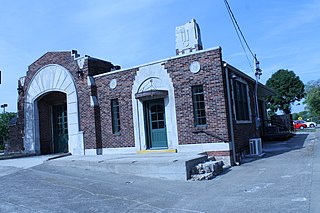
Fire Hall for Engine Company No. 18 (1930) is a fire station in Nashville, Tennessee. It is listed on the National Register of Historic Places listings in Davidson County, Tennessee (NRHP) in 2016.
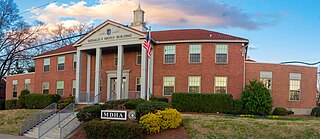
The James A. Cayce Administration Service Building is a building located in Nashville, Tennessee. It was listed on the National Register of Historic Places listings in Davidson County, Tennessee in 2019.

Whites Creek Historic District is a historic neighborhood in Whites Creek, Tennessee. It was listed on the National Register of Historic Places listings in Davidson County, Tennessee (NRHP) in 1984.
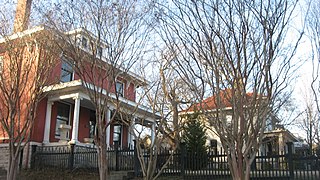
Belmont–Hillsboro Historic District is a historic neighborhood in Nashville, Tennessee. It was listed on the National Register of Historic Places listings in Davidson County, Tennessee (NRHP) in 1980. The area homes are now protected by a Belmont-Hillsboro Neighborhood Conservation Zone which creates rules for homeowners within the district.
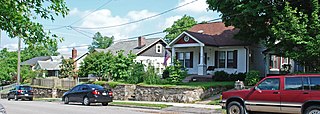
East Nashville Historic District is a historic neighborhood in East Nashville, Tennessee. It was listed on the National Register of Historic Places listings in Davidson County, Tennessee (NRHP) in 1982.

Eighth Avenue South Reservoir is a man-made masonry reservoir in Nashville, Tennessee. The reservoir was built on Kirkpatrick's Hill which was the former site of Fort Casino: a Union Army fort in the American Civil War. Completed in 1889, it ruptured in 1912 causing much property damage, and was repaired in 1914. In 1978, it was listed on the National Register of Historic Places listings in Davidson County, Tennessee (NRHP). The reservoir is the largest and oldest working reservoir supplying water to the city of Nashville, and remains in use as of 2022.
















